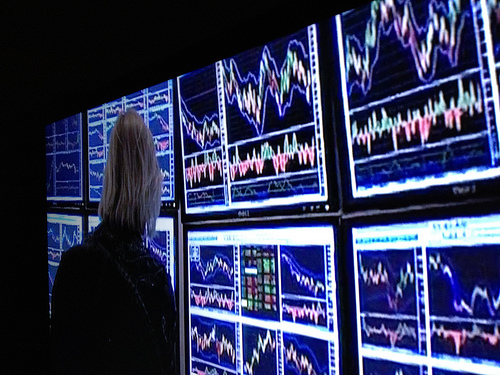Investing vs Trading – Contradictory and Complimentary
Posted by : Premraj | Posted on : Wednesday, May 18, 2016

When it comes to financial markets many people would prefer to leave it to the experts and not delve so much into learning and understanding how they operate. However, if you would like to be part of the financial and commodities markets and be actively or passively involved in either or both of them; then you need to be enlightened about the fundamentals upon which those markets are based. Two of the most obvious but very confusing words used in the markets are investing and trading.
To a common citizen, both words mean one and the same thing and they are often used interchangeably. However, the words are not similar and they represent different positions taken by different people with different interests in the markets.
Trading involves a speculative buying and selling of financial instruments such stocks, bonds, currencies or derivatives in order to make short quick gains. This is done nowadays via online systems, see this trading site as such an example. On the other hand, investing involves buying investment assets which could be stocks, bonds, currencies, real estate or commodities and holding them for a long period of time to allow them to appreciate in value so that you benefit from the long-term capital gains. Therefore in terms of time period, trading is short term while investing is long-term.
In addition, in terms of the skill sets required, trading differs from investing in that for trading you are required to learn how to do technical analysis while in investing you are required to learn how to do fundamental analysis. Technical analysis involves learning how to read trends and extracting trading information from tools like Japanese Candle Sticks. A trader will therefore spend most part of his or her day studying charts of the investment instrument they are trading on in order to know when to buy and sell and make a profit.
The investor on the other hand will be involved in a detailed analysis of the investment vehicle they want to invest in before they put their money in it. This process of fundamental analysis can be approached from top to bottom or bottom up. In the top to bottom approach, the investment analyst analyses the general macro-economic conditions and projects how the major economic indicators such as inflation and interest rates are likely to play out into the future based on historical trends. They then narrow own the analysis to the specific industry and market they are interested in and finally get to the particular asset they are focused on and analyze the pros and cons of investing in it. This kind of detailed analysis will generally result with a financial projection that will help the investor in determining whether the investment is able to give them their required rate of return over the given time period or not. Investing therefore needs the support of investment analysts who are specialists and understand how to use historical and economic data in making projections on the expected performance a given financial instrument.
To be a good trader, you need to be an aggressive person with a high tolerance of risk. There is a lot of pressure involved in trading since markets are always moving either upwards or downwards in split seconds. Attention to details and the ability to make very fast decision under a lot of pressure and maintaining your calm while in all that is a key trait of a good trader. On the other hand, an investor is a person with a long term view of each move they are making and they love to have all facts presented to them with regard to a given investment in the smallest details possible before they put their money in it. They do not engage in speculations and they love taking calculated and well though t through risks, which explains why they desire long investment periods in order to make any changes necessary to their investments if anything changes along the way.
Investing and trading have their clear differences from our explanation above, but they always overlap at some point. For instance, before investing in the shares of a given company, the investor will have to come up with a valuation for the stock. After getting the price at which they think it will be most appropriate to buy the stock, they will then have to study the short-term trends of the stock just like the traders in order to determine the best entry point. On the other hand, traders will at times be required to first analyze the fundamentals of the stocks they are trading in in order to have a better understanding of how they are likely to react to different market conditions. This will help the trader to better forecast the short-term trend in the price of the stock given the prevailing market conditions.
All in all, both trading and investing are important elements of a balanced investment portfolio since you are able to gain from the short-term price hikes in your daily transactions, while also benefiting from the long-term gains in your other investment assets. This investment approach of having a mix of trading and investing is picking up with most investors allocating their portfolio to traders and investors to capture their short-term and long-term needs as well as diversify their portfolio to reduce their risk exposure. Going forward we expect more of these kind of balanced portfolios, with the key assets involved in both being stocks and bonds.
 SU
SU REDDIT
REDDIT







